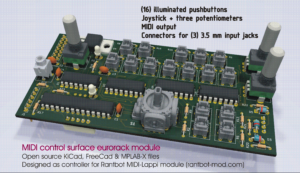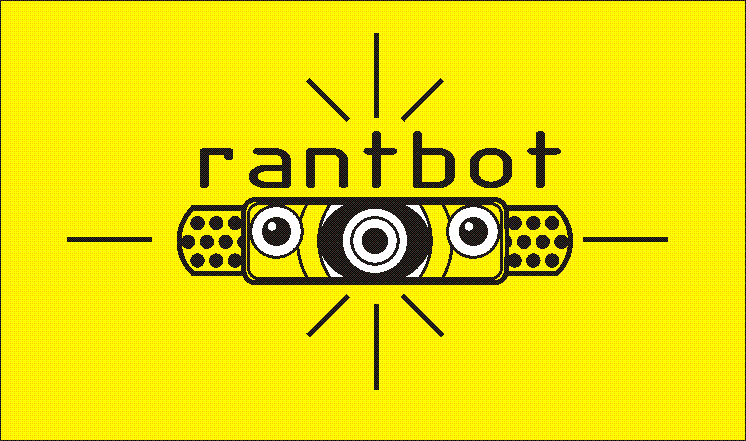Rantbot has built one Ctrl-Surf module using the 1st version printed circuit board, without a faceplate. Experiments were done to 3D print a faceplate, but it was too ugly. The decision was made to use a PCB frontplate to better match the lovely MIDI-Lappi modules. Translucent illuminated switch caps for the sixteen pushbuttons will be 3D printed. They have been tested, and function nicely.
The combination of MIDI-Lappi and Control Surface (Ctrl-Surf) modules has been very fruitful. Ctrl-Surf currently has three eurorack gate inputs: Arpeggio, Chord, and Preset. Each of the four illuminated Preset switches is associated with individual chord and arpeggio notes chosen from the twelve illuminated “piano keyboard” switches. The Mode knob selects Arpeggio or Chord display and note entry functions. The left half of Mode knob rotation selects Arpeggio, and the right half selects Chord.
The arpeggio input clocks notes in an ascending pattern. The chord input strikes and releases notes together. The Preset input advances to the next one of four presets, in a circular fashion.
The two knobs at the top of the module select the 127 built-in sounds using MIDI program change messages compatible with the MIDI-Lappi. The arpeggio and chords can have independent sounds.
The joystick is used for pitch bend and transpose functions.
All of this is operating on the 1st version of Ctrl-Surf module hardware. It is so interesting to use that Rantbot produced a CD called Crex Meadows featuring MIDI-Lappi and Ctrl-Surf in a eurorack environment.
The 2nd version of Ctrl-Surf looks like this in KiCAD:
Rantbot has added a 4th eurorack input, and LEDs for each input. The temptation, of course, is to add more features. As soon as Rantbot added the 4th input, it wanted a 5th, but not sure if it is possible without expanding the module.
Here is another visualization from FreeCAD:


Recent Comments